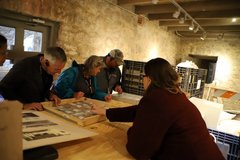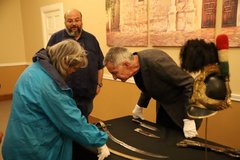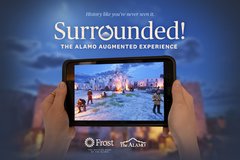On Friday, October 25th, Alamo Trust, Inc. welcomed members of the Alamo Mission Archaeological Advisory Committee (AMAAC) to San Antonio, and showed them how their expertise has positively impacted Alamo archaeology.
The AMAAC consists of representatives from federally-recognized Native American tribes, who have offered guidance and insight throughout the archaeological investigations at the Alamo since the committee formed this summer.
AMAAC members were given an update on the Alamo Plan by Alamo CEO Douglass McDonald before going on a tour of the Alamo site. Alamo Conservator Pam Rosser provided an overview of the preservation occurring in the Alamo Church, then Alamo Archaeologist Kristi Nichols took them through the Long Barrack and Church to review the latest archaeological investigations.




